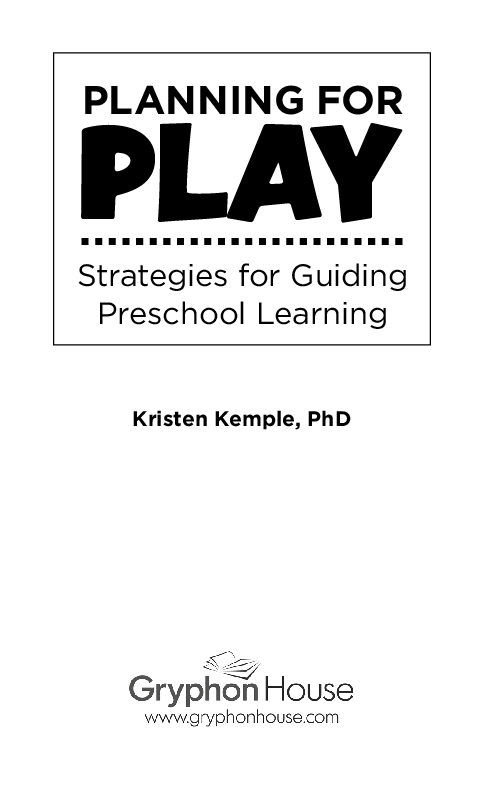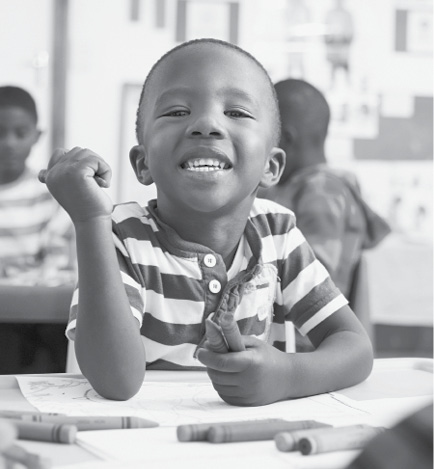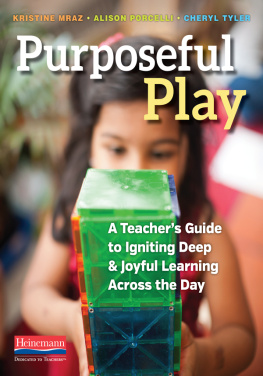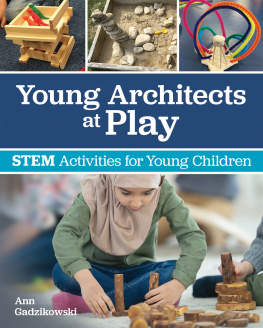Contents
one
Promoting Development and Learning
two
Understanding the Complexand SimpleNature of Play
three
Understanding the Teachers Roles as Children Play
four
Encouraging Social-Emotional Competence
five
Developing Self-Regulation
six
Promoting Mathematical Learning
seven
Fostering Language Learning and Literacy
eight
Supporting Play and So Much More

Copyright 2017 Kristen Kemple
Published by Gryphon House, Inc.
P. O. Box 10, Lewisville, NC 27023
800.638.0928; 877.638.7576 (fax)
Visit us on the web at www.gryphonhouse.com.
All rights reserved. No part of this publication may be reproduced or transmitted in any form or by any means, electronic or technical, including photocopy, recording, or any information storage or retrieval system, without prior written permission of the publisher. Printed in the United States. Every effort has been made to locate copyright and permission information.
Cover image used under license from iStock.com. Interior images used under license from Shutterstock.com.
Library of Congress Cataloging-in-Publication Data
The cataloging-in-publication data is registered with the Library of Congress for ISBN 978-0-87659-716-3.
Bulk Purchase
Gryphon House books are available for special premiums and sales promotions as well as for fund-raising use. Special editions or book excerpts also can be created to specifications. For details, call 800.638.0928.
Disclaimer
Gryphon House, Inc., cannot be held responsible for damage, mishap, or injury incurred during the use of or because of activities in this book. Appropriate and reasonable caution and adult supervision of children involved in activities and corresponding to the age and capability of each child involved are recommended at all times. Do not leave children unattended at any time. Observe safety and caution at all times.
Dedication
This book is dedicated to my parents, Elizabeth and Roger, who allowed me the freedom of play, and to my children, Nick and Susi, who remind me daily of its power.
Introduction
Play has begun to take a back seat in the lives of young children. This is a disturbing state of affairs, which seems to be happening for several reasons. With changes in technology and an increase in screen time in childrens daily lives, they spend less time playing and more time in passive and sedentary activities. Increasing emphasis on high-stakes testing of narrowly defined skills has led to a belief that time spent in classrooms on play is not learning time and is, therefore, wasted time. Even in after-school programs and extracurricular activities, children spend less time in play and more time on structured activities. Educators and researchers in early childhood development are experiencing a sense of disbelief that they are having to defend the value of play for kindergarten and primary-aged children, let alone for those as young as preschoolers!
The forces that are pushing play out of the lives of young children are forces rooted in misunderstandings about the way young children develop and learn. Although play is not the only way children progress in the early years, it is an indispensable context and process for learning.
This book is designed to illustrate the value of both free play and guided play in preschool childrens learning and development. In each chapter you will find anecdotes that explore the possible ways children play, what they can learn from their self-motivated engagement, and how teachers can support that learning. In other words, play is presented not as an activity that is simply allowed to happen but instead as a process that requires teachers to be knowledgeable, to plan well, and to be intentional. To make the most of preschoolers play, teachers should consider important child-development and learning goals that can be supported through play, as well as specific strategies for capitalizing on and enhancing the power of play for childrens educational benefit and well-being.
one
Promoting Development
and Learning

In Miss Abelas full-day preschool class, play is at the center of the program. Children engage in about an hour of indoor play and an hour of outdoor play in the morning and again in the afternoon. A visitor to the program will observe children engaged in free play as well as teacher-guided play. The other four hours of the day include meals and snacks, rest time, and teacher-led small and large group activities of about ten to twenty minutes each. In those group activities, children participate in music and art experiences; listen to and discuss storybooks and informational books; write and draw in journals; engage in science and math activities; and learn letter recognition through fun, engaging, and meaningful lessons.
During large and small group activities, Miss Abela uses diverse learning formats. She knows young children do not learn everything through play, and she uses a variety of developmentally appropriate teaching strategies that allow for active participation by the children. At the same time, she knows young children learn a great deal through play and need play for a variety of developmental reasons. Miss Abela plans thoughtfully and intentionally to maximize play-based learning and development. The children in her class are learning, growing, and thriving. They are enjoying their preschool experience.
As professionals committed to early childhood education, we want to see children reach their greatest potential and contribute to a bright and better future. A wealth of research-based practices is available to make these goals possible. In developmentally appropriate preschool programs, teachers promote childrens learning and development in ways that are attentive to the needs, interests, abilities, and developmental capabilities of individual children. They do this in ways that are sensitive to the general age range of the group and to the social, cultural, and experiential backgrounds of the young children in their care. The teaching expertise involved in providing for and supporting play stands among the many crucial skills a preschool teacher will use as part of developmentally appropriate practice.
What do parents want for their young children? Virtually all want to see their children grow to be happy and successful adults. When choosing a preschool program, some parents may not see their decision as particularly important to their childs long-term outcomes. Among those who do see the importance of the decision, there may be many different ideas regarding what kind of preschool program will best contribute to putting their children on a path toward growing up as happy and successful people. Some believe a preschool program in which children spend a great deal of time in freely chosen exploration and play is the best choice. Many others believe the ideal is a highly structured environment in which teachers lead most activities, getting their child started as early as possible in acquiring basic academic skills. In these considerations, play and academic learning are frequently cast as two very different and unrelated things. But are they?










